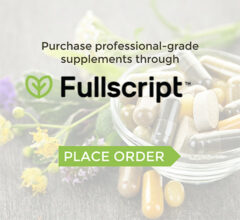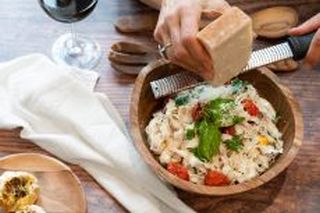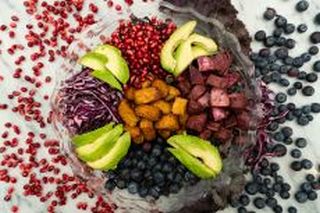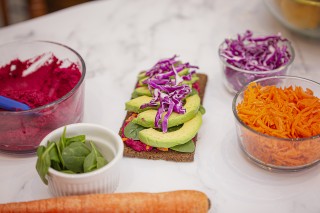Now that we are post hurricane Sandy, you may be wondering how to keep food safe following this unprecedented storm, as well as how to prepare should we have the misfortune of another frankenstorm.
Preparing for the storm:
Purchase appliance thermometers for your refrigerator and freezer. Test the temperatures with your current settings by placing the refrigerator thermometer in a glass of water in the refrigerator, and the freezer thermometer between frozen items in the freezer. Check back in about 5 hours. The refrigerator should be no more than 40 degrees, and the freezer no more than 0 degrees. If your temperatures are off, adjust your appliance settings accordingly.
Freeze plastic sandwich bags of water so you can transfer them to the refrigerator to keep the temperature down in the event of a power outage. Since cold air falls, place the frozen bags in a bowl on the top shelves of the refrigerator. Dry ice is another option.
Purchase canned goods that are easy to prepare since any cooking you do will likely be done with limited lighting. Canned tuna, salmon, sardines, soups, and beans and jarred pasta sauces are good options. If you are able to light a gas stove to boil water, have pasta, rice, and other grains on hand. You can boil water and cook/heat foods in disposable pans directly on your grill.
If you are using a cooler, keep it off the floor if you think you might be exposed to flood water, which can contaminate your food. In fact, store all dry and canned goods off the floor.
Keep on hand paper plates, plastic ware, disposable pans, bottled water, and a manual can opener.
When the power goes out:
Refrigerated protein items like eggs, meat, and poultry need to be maintained at no more than 40 degrees. The freezer should remain at 0 degrees, but if your freezer appliance thermometer achieves no more than 40 degrees, it is safe to refreeze any items that have begun to thaw. The more you have in the freezer, the longer it will maintain proper temperature. If you do not have much in the freezer, pooling the items together will keep them frozen longer. The less you open your refrigerator or freezer, the longer your food will keep.
What if my food was exposed to fire?
Any food stored near a fire needs to be discarded. The heat can cause bacteria to grow, and toxic fumes from burning materials, as well as chemicals used to put the fire out may permeate your food. This includes food stored in the refrigerator and freezer.
What if my food was exposed to flood water?
Any boxed items that get wet should be discarded. For canned items to be salvaged, first inspect for damage, peel the labels off, and thoroughly wash with soap and water. Then, sanitize each can by using either heat, or a bleach solution. To sanitize with heat, immerse cans in water, then boil for 2 minutes. To sanitize with bleach, use 1 Tbsp unscented bleach to each gallon of clean water and immerse for 15 minutes. Air dry, then re-label cans with a permanent magic marker, including item name, plus expiration date.
For information regarding specific foods, when save, and when to throw them out, see the chart below:
| When to Save and When to Throw It Out | |
| FOOD | Held above 40 °F for over 2 hours |
| MEAT, POULTRY, SEAFOOD Raw or leftover cooked meat, poultry, fish, or seafood; soy meat substitutes |
Discard |
| Thawing meat or poultry |
Discard |
| Meat, tuna, shrimp,chicken, or egg salad |
Discard |
| Gravy, stuffing, broth |
Discard |
| Lunchmeats, hot dogs, bacon, sausage, dried beef |
Discard |
| Pizza – with any topping |
Discard |
| Canned hams labeled “Keep Refrigerated” |
Discard |
| Canned meats and fish, opened |
Discard |
| CHEESE Soft Cheeses: blue/bleu, Roquefort, Brie, Camembert, cottage, cream, Edam, Monterey Jack, ricotta, mozzarella, Muenster, Neufchatel, queso blanco, queso fresco |
Discard |
| Hard Cheeses: Cheddar, Colby, Swiss, Parmesan, provolone, Romano |
Safe |
| Processed Cheeses |
Safe |
| Shredded Cheeses |
Discard |
| Low-fat Cheeses |
Discard |
| Grated Parmesan, Romano, or combination (in can or jar) |
Safe |
| DAIRY Milk, cream, sour cream, buttermilk, evaporated milk, yogurt, eggnog, soy milk |
Discard |
| Butter, margarine |
Safe |
| Baby formula, opened |
Discard |
| EGGS Fresh eggs, hard-cooked in shell, egg dishes, egg products |
Discard |
| Custards and puddings |
Discard |
| CASSEROLES, SOUPS, STEWS |
Discard |
| FRUITS Fresh fruits, cut |
Discard |
| Fruit juices, opened |
Safe |
| Canned fruits, opened |
Safe |
| Fresh fruits, coconut, raisins, dried fruits, candied fruits, dates |
Safe |
| SAUCES, SPREADS, JAMS Opened mayonnaise, tartar sauce, horseradish |
Discard if above 50 °F for over 8 hrs. |
| Peanut butter |
Safe |
| Jelly, relish, taco sauce, mustard, catsup, olives, pickles |
Safe |
| Worcestershire, soy, barbecue, Hoisin sauces |
Safe |
| Fish sauces (oyster sauce) |
Discard |
| Opened vinegar-based dressings |
Safe |
| Opened creamy-based dressings |
Discard |
| Spaghetti sauce, opened jar |
Discard |
| BREAD, CAKES, COOKIES,PASTA, GRAINS Bread, rolls, cakes, muffins, quick breads, tortillas |
Safe |
| Refrigerator biscuits,rolls, cookie dough |
Discard |
| Cooked pasta, rice, potatoes |
Discard |
| Pasta salads with mayonnaise or vinaigrette |
Discard |
| Fresh pasta |
Discard |
| Cheesecake |
Discard |
| Breakfast foods –waffles, pancakes, bagels |
Safe |
| PIES, PASTRY Pastries, cream filled |
Discard |
| Pies – custard,cheese filled, or chiffon; quiche |
Discard |
| Pies, fruit |
Safe |
| VEGETABLES Fresh mushrooms, herbs, spices |
Safe |
| Greens, pre-cut, pre-washed, packaged |
Discard |
| Vegetables, raw |
Safe |
| Vegetables, cooked; tofu |
Discard |
| Vegetable juice, opened |
Discard |
| Baked potatoes |
Discard |
| Commercial garlic in oil |
Discard |
| Potato Salad |
Discard |
| Frozen Food |
| When to Save and When To Throw It Out | ||
| FOOD | Still contains ice crystals and feels as cold as if refrigerated | Thawed. Held above 40 °F for over 2 hours |
| MEAT, POULTRY, SEAFOOD Beef, veal, lamb, pork, and ground meats |
Refreeze |
Discard |
| Poultry and ground poultry |
Refreeze |
Discard |
| Variety meats (liver, kidney, heart, chitterlings) |
Refreeze |
Discard |
| Casseroles, stews, soups |
Refreeze |
Discard |
| Fish, shellfish, breaded seafood products |
Refreeze. However, there will be some texture and flavor loss. |
Discard |
| DAIRY Milk |
Refreeze. May lose some texture. |
Discard |
| Eggs (out of shell) and egg products |
Refreeze |
Discard |
| Ice cream, frozen yogurt |
Discard |
Discard |
| Cheese (soft and semi-soft) |
Refreeze. May lose some texture. |
Discard |
| Hard cheeses |
Refreeze |
Refreeze |
| Shredded cheeses |
Refreeze |
Discard |
| Casseroles containing milk, cream, eggs, soft cheeses |
Refreeze |
Discard |
| Cheesecake |
Refreeze |
Discard |
| FRUITS Juices |
Refreeze |
Refreeze. Discard if mold, yeasty smell, or sliminess develops. |
| Home or commercially packaged |
Refreeze. Will change texture and flavor. |
Refreeze. Discard if mold, yeasty smell, or sliminess develops. |
| VEGETABLES Juices |
Refreeze |
Discard after held above 40 °F for 6 hours. |
| Home or commercially packaged or blanched |
Refreeze. May suffer texture and flavor loss. |
Discard after held above 40 °F for 6 hours. |
| BREADS, PASTRIES Breads, rolls, muffins, cakes (without custard fillings) |
Refreeze |
Refreeze |
| Cakes, pies, pastries with custard or cheese filling |
Refreeze |
Discard |
| Pie crusts, commercial and homemade bread dough |
Refreeze. Some quality loss may occur. |
Refreeze. Quality loss is considerable. |
| OTHER Casseroles – pasta, rice based |
Refreeze |
Discard |
| Flour, cornmeal, nuts |
Refreeze |
Refreeze |
| Breakfast items –waffles, pancakes, bagels |
Refreeze |
Refreeze |
| Frozen meal, entree, specialty items (pizza, sausage and biscuit, meat pie,convenience foods) |
Refreeze |
Discard |
Source: USDA Emergency Preparedness


 Follow Me On Instagram
Follow Me On Instagram Like My Facebook Page
Like My Facebook Page My LinkedIn
My LinkedIn



